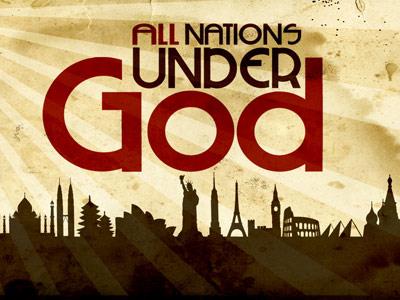-
A Jain Believer In Christ - Manilal C. Parekh
Contributed by B. D. B Moses on Nov 28, 2017 (message contributor)
Summary: The Jains can see that at the cross, Jesus won the final victory and became an authentic Jain (i.e. conqueror). Jesus shall draw all men to Himself, and among them the Jains.
"But I, when I am lifted up from the earth, will draw all men to myself."
Intro
Manilal C. Parekh was born in 1885 in Rajkot, western Gujarat, India, belonging to the Bania Jain community. He was attracted to Christ when during in illness when in 1903 after entering University he read the book Imitation of Christ. During this period he admired greatly the writings of Keshaub Chandra Sen and his Christ centered outlook. Parekh fell ill again with tuberculosis and he read the Bible and came to a point of personal faith in Christ. After his belief in Christ, Parekh was baptized February 6, 1918 from an Anglican priest in Bombay. From the time of his baptism he thought of himself as a Christian Hindu, though he interpreted Hindu as derived from the name of the river Indus in a national and cultural rather than a religious context.
Below is a summary of positions that Manilal Parekh held on various important subjects. Also included is a summary of his important article, The Christian Religion and the Jains followed by some conclusions drawn from his life and ministry.
On the Church
After his baptism Parekh kept only a lose tie with the Anglican Church. He raised objections regarding the traditional concept of the Church as a separate religious community. Instead Parekh advocated the possibility of the House Church as a fellowship of the believers within the broad-based Hindu religious, cultural, social framework. “The Hindu church will not be the “hyper-organization” now existing as Church, but more as the Satsang (the informal gathering of truth-seekers for sharing and fellowship) as in the Hindu tradition.” 1 He felt that the established church was failing to appeal to the higher social economic groups. He founded the “Hindu Church of Christ” free from Western influence. He gave his home in Rajkot the name “Oriental Christ House.”
On Christianity
The westernized and meat-eating Christian community was not to the liking of his Jain traditions. He was soon disillusioned by the Christian community, which he felt to be westernized, mercenary, quarrelsome, and depressingly permeated by people of low caste origins. He was bitterly critical of the Westerness of Christianity in India. He felt Christianity in India failed to face the challenge of vegetarianism.
On Community
He was against Christians virtually becoming a separate caste-group. After his baptism he stayed in his Jain family and sought to build Disciples of Christ within Hinduism. He felt that Christian discipleship should not necessitate the cutting of ties with family and caste-community. He felt Hindus should remain as “Hindu Christians” in their own community, as he did. His Jain community and family showed tolerance toward him, and never excommunicated him.
On Baptism-
In 1924 he wrote on baptism. He felt that baptism should be an expression of the spiritual discipleship of Jesus Christ and the public testimony of salvation given in Jesus Christ and appropriated through faith; and that it should not be associated with severance from one’s own family and caste and the Hindu community. He saw a misunderstanding of baptism that was an entrance to a new and distinct social and legal communal entity, the Christian community. He was against giving up baptism because he saw it as integral to Christian discipleship, and was instituted by Christ. He held that the church regarded baptism too much as a social rite, the act of joining a different community. He was of the opinion, proselytism has made it impossible for cultured Hindus to accept baptism and made the Church primarily a body of outside converts, with mixed spiritual and unspiritual motives.
Evangelism-
He took on the role of an itinerant evangelist when in 1924 Stanley Jones provided him with the support for carrying out an evangelism program all across India. Parekh draws a clear distinction between evangelism, the proclamation of the Gospel to individuals, and proselytism (by which he meant mass-conversion). To voice his dissatisfaction with the Mass Movement approach to evangelism he wrote a book in reaction to Bishop Pickett’s, Mass Movements in India book. Parekh was surprised Stanley Jones supported Pickett’s ideas and approach to evangelism.
On the Cross-of Christ.
He believed the Jain doctrine of ahimsa (non-killing or nonviolence) is a preparation for accepting the work of Christ on the cross. He said that Jains can see that at the cross, Jesus won the greatest and final victory over himself and the world and became an authentic Jain (i.e. the conqueror, from which Jainism arose). Parekh speaks of the cross as the manifestation of swahimsa (the destruction of self for the good of others), which goes beyond ahimsa.
How he finished-
During later years he lost all connections with the organized Anglican churches. In 1939, at 54 years of age he began a shift of Christology, to what he called Bhagavata Dharma, religion of personal theism, and changed the name of his house from “Oriental Christ House” to “Harmony House”. “By the time he writes his book about Jesus in 1953, A Hindu portrait of Jesus Christ, He seems to have lost sight of the living Christ who earlier meant so much to him.” 2 He suffered much through his life with illness especially his tuberculoses. Manilal Parekh Died at the age of 82 in Rajkot in 1967.

 Sermon Central
Sermon Central


